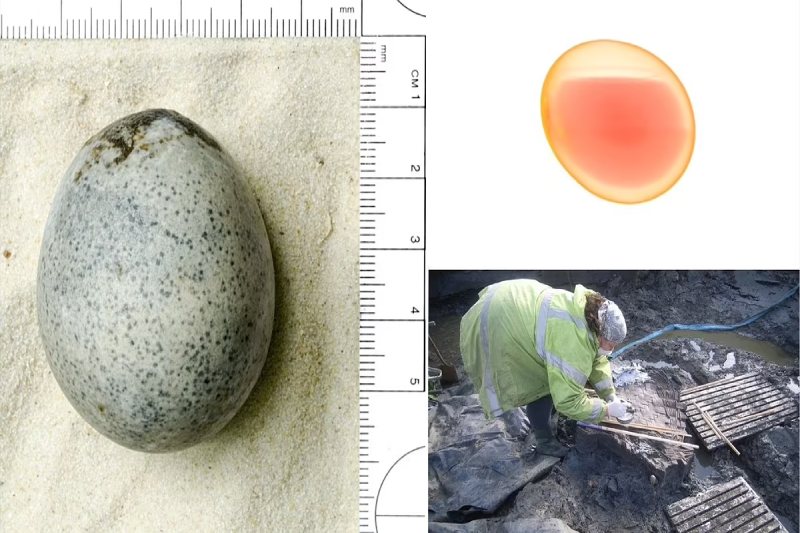Scientists Provide the Details of the Oldest Intact Egg in the World

Scientists have discovered that an intact chicken egg that is thought to be 1,700 years old is thought to be the only one of its kind in existence. The egg still contained fluids.
Between 2007 and 2016, it was found during an excavation in Aylesbury, Buckinghamshire, and at the time, researchers described it as a “genuinely unique discovery.”
Three more eggs were cracked by archaeologists during the excavation, releasing a “potent stench,” but one egg was unbroken.
Oxford Archaeology experts speculate that the wet hole may have served as a Roman-style wishing well.
The egg, which is thought to be the sole unbroken egg from the era, still has the yolk and egg white inside, according to a microscan.
The excavation was overseen by senior project manager Edward Biddulph of Oxford Archaeology, who stated: “We were absolutely blown away when we saw the contents in there, as we might have expected them to have leached out.”
Dana Goodburn-Brown, a conservator, completed the latest work and took the egg to the University of Kent for additional examination.
“It produced an amazing image that indicated that the egg, apart from being intact – which is incredible enough – also retained its liquid inside, presumably deriving from the yolk, albumen etc,” said Mr Biddulph.
The egg was brought to the Natural History Museum in London, where Douglas Russell, the senior curator of the museum’s collection of birds, eggs, and nests, provided advice on how to preserve the egg and extract its contents.
Mr Biddulph continued: “As we found out when we visited the Natural History Museum, [it] appears to be the oldest known example in the world.”
“Walking around London with a 2,000-year-old egg” was “a bit daunting,” the archeologist said.
“And it was a bit hairy on the Tube – although it was well protected – it’s not like I was carrying it around in my pocket.”
Presently, the egg is kept at the Discover Bucks Museum in Aylesbury while efforts are made to figure out a way to remove the insides without damaging the fragile shell.
This is the next phase in the life of this amazing egg, and there is a ton of opportunity for scientific study.